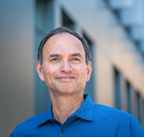It is natural to focus on the movement of charged ions in electric fields. In this talk however, I will focus on the movement of neutral “solvent” molecules used to dissolve the ions inside batteries. Any energy used to move solvent molecules is wasted, and thus it is important to understand how and why they move. In our case, the solvent is a polymer; I believe that polymer electrolytes will play an essential role in enabling next-generation rechargeable batteries. My journey began when I learned about the continuity equation as an undergraduate student. I will describe how the continuity equation changes in the presence of an electric field. While ion velocities can be inferred from current-voltage measurements, there were no well-established approaches for measuring velocities of neutral molecules in batteries. My group (and others) have recently developed experimental approaches for accomplishing this. Surprisingly, the field-induced velocity of uncharged long polymer chains is comparable to that of the ions. Theoretical predictions will be compared with experimental results. In addition to continuum-scale experiments, I will describe the results of quasi-elastic neutron scattering experiments which enable the study of the motion of polymer segments in the vicinity of ions on the Angstrom length scale. These measurements and computer simulations on the same length scale provide insight into the underpinnings of continuum transport. The measurements are similar to the pioneering work of Professor Birnboim and his students in the area of quasi-elastic light scattering. I will conclude by describing the connection between our work on polymer electrolytes and the continuing push to commercialize all-solid rechargeable batteries for electric vehicles and other energy-related applications.

Nitash is a chemical engineer with a bachelor's degree from the Indian Institute of Technology in Kanpur, India, a master's degree from Clarkson University, and a PhD from Rensselaer Polytechnic Institute. This was followed by two post-doctoral appointments at the University of Minnesota and the Exxon Research and Engineering Company. In 1992, he joined the faculty of Department of Chemical Engineering at Polytechnic University in Brooklyn, New York. In 2000 he moved to Berkeley to join the faculty at the Department of Chemical Engineering at the University of California and to join Lawrence Berkeley National Laboratory as a faculty scientist. He has managed to hang on to both jobs. In addition, he cofounded two battery start-ups with his students and collaborators, Seeo and Blue Current.

